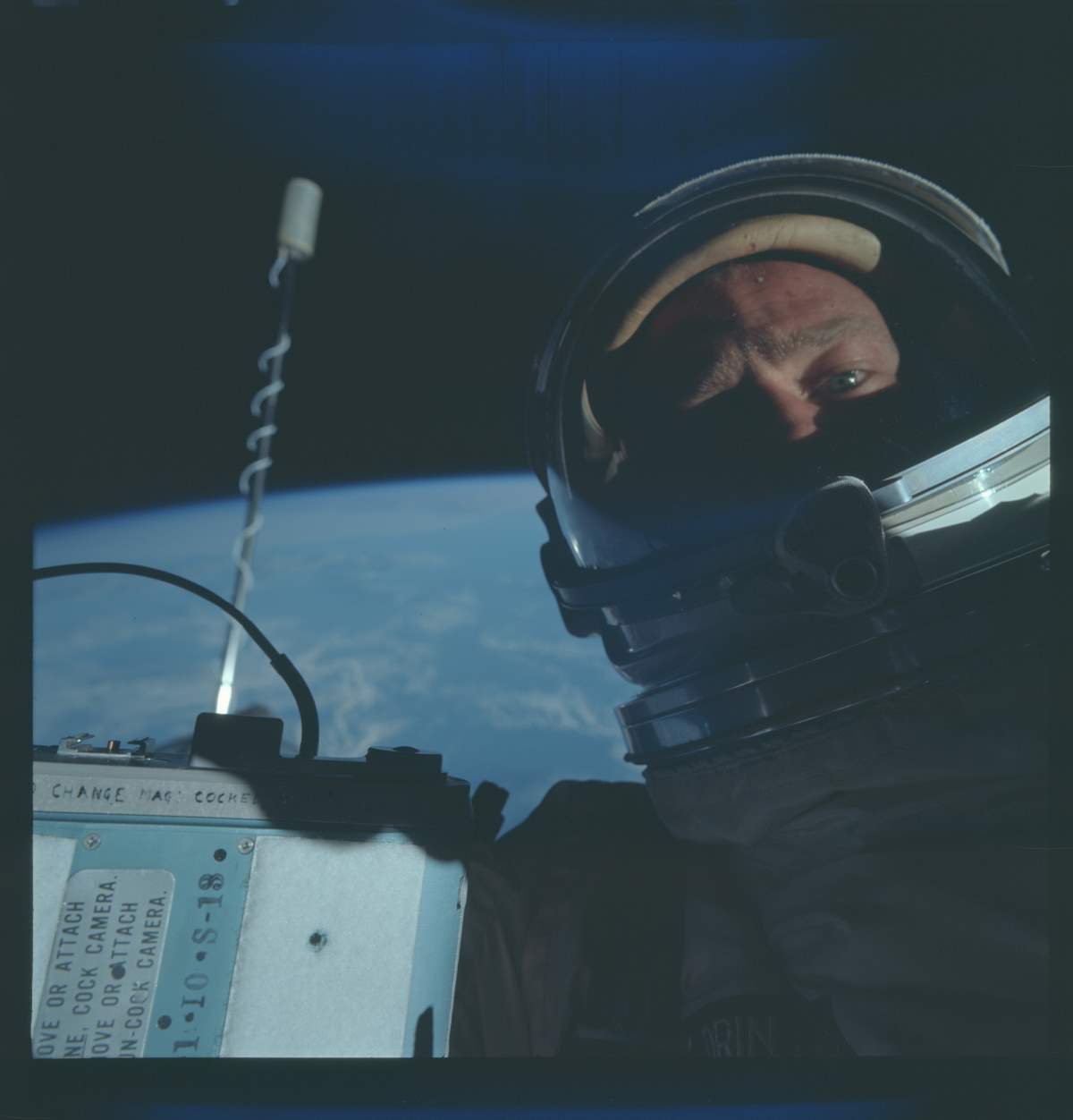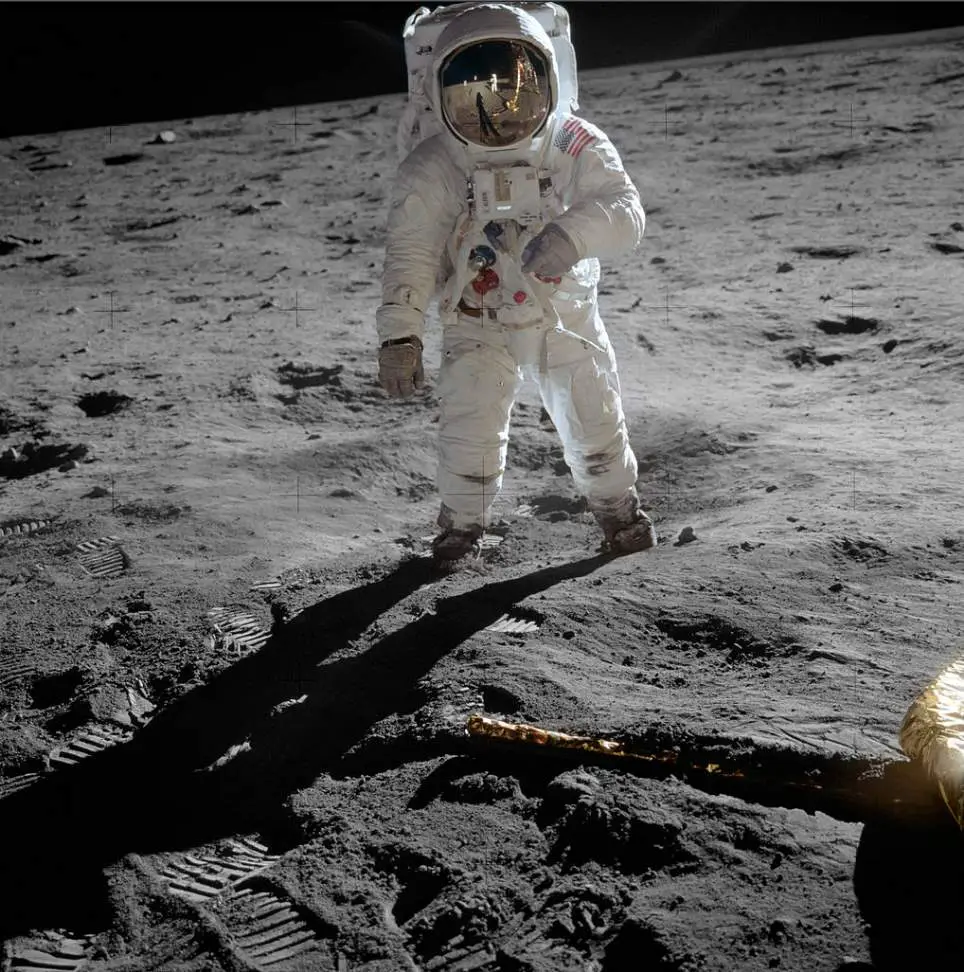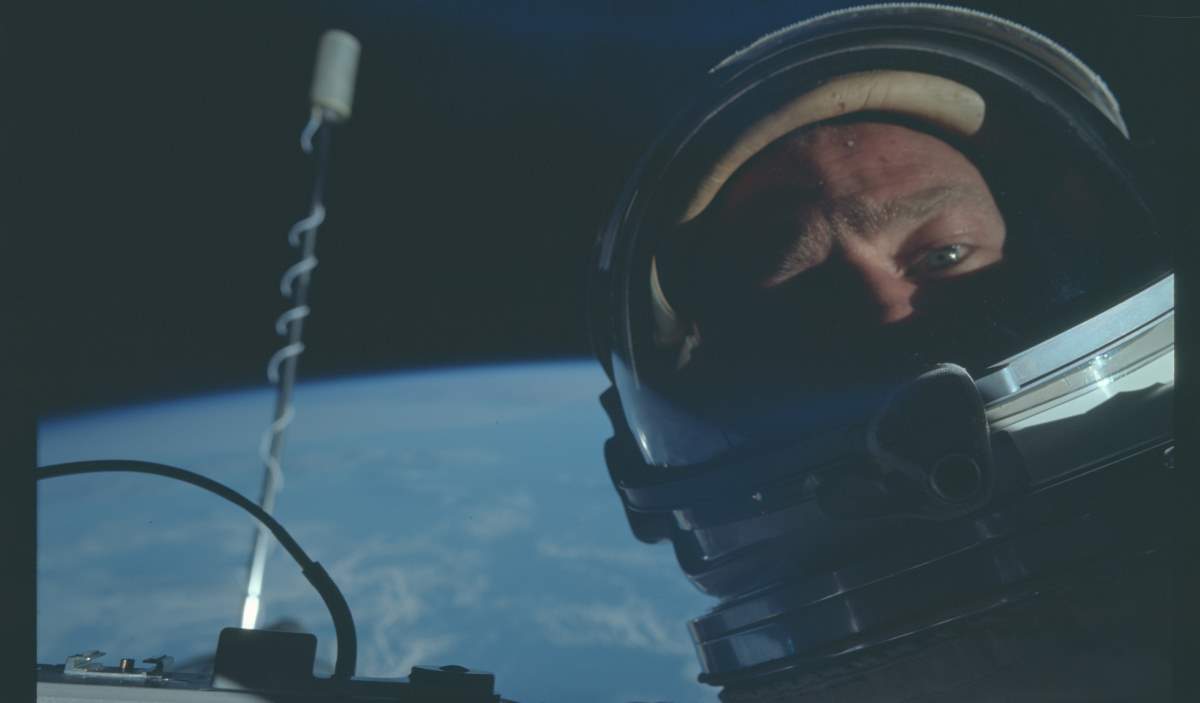On November 12, 1966, during the Gemini 12 mission EVA 1 (Extravehicular activity), NASA astronaut Edwin “Buzz” Aldrin took his own self-portrait with his camera with our beautiful Earth in the background. This historic photo is widely regarded as the “first space selfie”.

Gemini 12 (officially Gemini XII) was a 1966 crewed spaceflight in NASA’s Project Gemini (1961-1966), which was NASA’s second human spaceflight program. Conducted between projects Mercury and Apollo. Gemini XII was the 10th and final crewed Gemini flight, the 18th crewed American spaceflight, and the 26th spaceflight of all time, including X-15 (an experimented hypersonic rocket-powered aircraft) flights over 100 kilometers (54 nautical miles). Commanded by Gemini VII veteran James A. Lovell, the flight featured three periods of extravehicular activity (EVA, see notes 1) by rookie Edwin “Buzz” Aldrin, lasting a total of 5 hours and 30 minutes, which was a record-breaker at the time.

Related: “I was on the Moon!”
Gemini 12 was designed to perform rendezvous and docking with the Agena target vehicle, an uncrewed spacecraft used by NASA during its Gemini program to develop and practice orbital space rendezvous and docking techniques and to perform large orbital changes, in preparation for the Apollo program lunar missions.
Aldrin would later be one of the first two humans to land and walk on the Moon. He set foot on the Moon at 03:15:16 on July 21, 1969 (UTC), 9 minutes after Neil Armstrong (August 5, 1930 – August 25, 2012) first touched the surface.

Image: Wikipedia
Notes
- Extravehicular activity (EVA), also called “spacewalking” is any activity done by an astronaut or cosmonaut outside a spacecraft beyond the Earth’s appreciable atmosphere.
Sources
- Buzz Aldrin on Wikipedia
- Extravehicular activity on Wikipedia
- Gemini 12 on Wikipedia
- Project Gemini on Wikipedia
- Agena target vehicle on Wikipedia
- The Largest Elephant Ever Recorded : Henry - October 13, 2024
- All Moons in Our Solar System [2024 Update] - September 17, 2024
- Budget of NASA, Year by Year [1980-1989] - June 10, 2024
